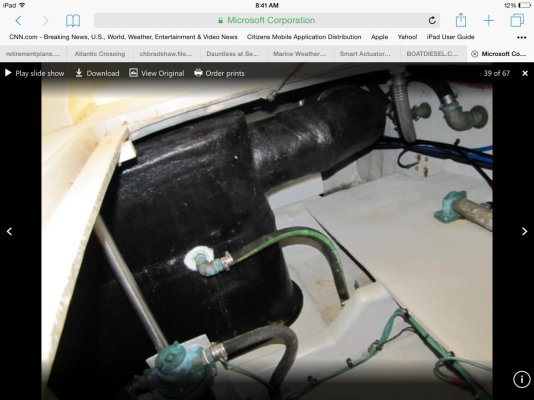KapnKarl
Veteran Member
Does anyone know what the purpose of the muffler raw water hookup in this picture is for and does it need to remain open underway? The boat is a 2004 Mainship 400 with a single CAT 3126. We've been looking at this boat for possible purchase and wonder if there are any general (or specific) pros and cons other folks have. Thanks in advance! Karl

